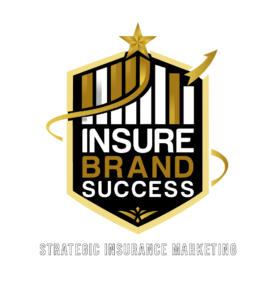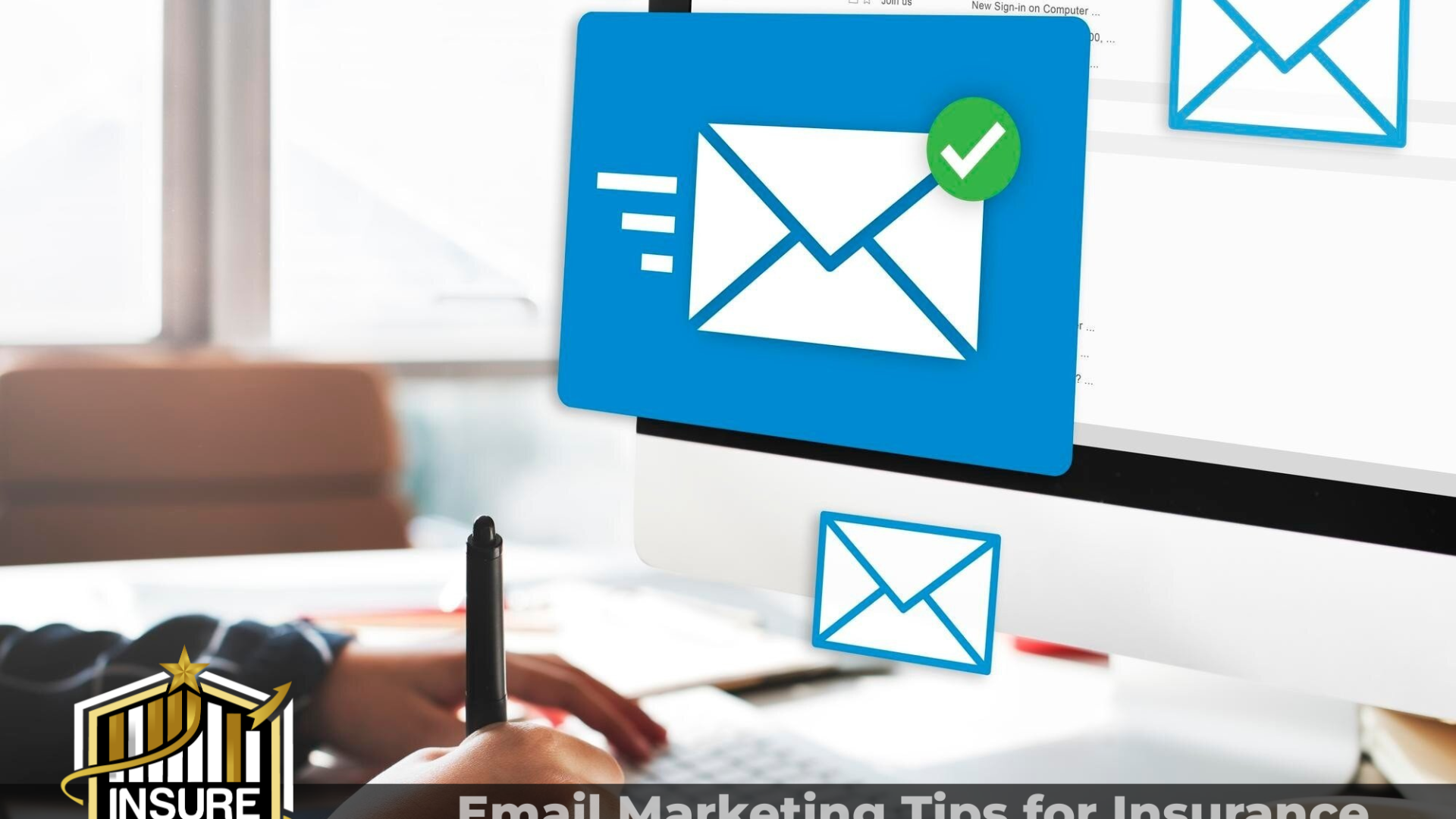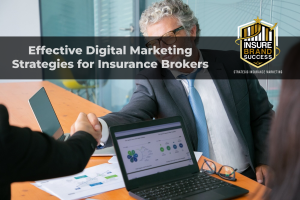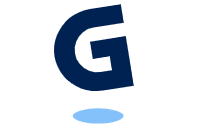Email marketing remains one of the most effective and cost-efficient ways for insurance agencies to generate leads, nurture prospects, and retain existing clients. With an average ROI of $42 for every $1 spent, email marketing consistently outperforms many other digital marketing strategies—especially when it’s targeted, personalized, and backed by a clear strategy. In an industry where trust and long-term relationships are key, email provides a direct, personal channel to stay connected with your audience.
For insurance agencies, an optimized email marketing strategy can:
✅ Strengthen relationships with potential and existing clients
✅ Educate subscribers on policy options and industry trends
✅ Encourage renewals, upsells, and cross-sells
✅ Convert prospects into long-term policyholders
Beyond its impressive ROI, email marketing allows insurance professionals to deliver timely, relevant information right to the inboxes of people who’ve already expressed interest in their services. Whether it’s a welcome series for new leads, monthly newsletters, policy reminders, or helpful tips tailored to client needs, email is a key tool for delivering value and building loyalty over time.
But success in email marketing requires more than just sending promotional messages. To truly resonate with your audience and drive action, your emails must offer meaningful content, be well-timed, and reflect a deep understanding of your clients’ concerns and goals. In this guide, we’ll explore proven strategies and best practices to help your agency harness the full power of insurance email marketing—and turn every message into a relationship-building opportunity.

Why Email Marketing is Crucial for Insurance Agencies
Unlike social media or paid ads, email marketing gives agencies direct access to their audience, allowing for more personalized interactions and higher engagement rates. Here’s why email should be an integral part of your digital marketing for insurance agencies:
🔹 Clients Prefer It – 72% of consumers prefer to receive promotional content through email rather than social media or other channels.
🔹 Highly Targeted – You can segment your audience based on their insurance needs (auto, home, life, business) and send relevant content.
🔹 Encourages Customer Retention – Well-crafted emails can remind clients about renewals, new policy options, or special offers.
🔹 Cost-Effective Lead Generation – Email marketing has a low cost per lead, making it a smart investment for insurance agencies.
According to the Small Business Administration (SBA), personalized and data-driven email marketing can significantly improve conversion rates and customer retention.
1. Build a High-Quality Email List
The success of any email campaign starts with a strong, engaged subscriber list. Here’s how to grow your list with high-quality leads:
✔️ Leverage Your Website – Offer a free guide like “10 Mistakes to Avoid When Choosing Insurance” in exchange for an email signup.
✔️ Use Social Media – Promote your newsletter or lead magnets through social media strategies.
✔️ Ask for Emails at Every Interaction – When speaking with prospects or clients, encourage them to opt-in to receive updates and policy reminders.
✔️ Run a Referral Program – Offer incentives for existing clients who refer friends or family to sign up for your email list.
⚠️ Avoid buying email lists—these contacts are often unqualified and can harm your deliverability rates.
2. Segment Your Audience for Personalized Messaging
Sending the same email to your entire list won’t yield the best results. Instead, segment your audience to ensure they receive relevant, targeted content. Consider segmenting by:
📌 Policy Type: Auto, home, life, or business insurance customers should receive different types of emails.
📌 Stage in the Buyer’s Journey: Are they a new lead, a current policyholder, or a past customer?
📌 Demographics: Age, location, and occupation can impact the types of policies they’re interested in.
📌 Engagement Level: Send special offers to highly engaged subscribers, and re-engagement emails to inactive ones.
🔹 Example: Instead of sending a generic email about home insurance, target first-time homebuyers with an email explaining “5 Things You Should Know Before Purchasing Home Insurance.”
According to the Insurance Information Institute, tailored customer communication leads to higher policy renewals and cross-sell opportunities.
3. Write Compelling Subject Lines to Improve Open Rates
Your subject line determines whether your email gets opened or ignored. To increase open rates:
✅ Keep it short and clear (under 50 characters)
✅ Create a sense of urgency (“Limited-Time Discount on Auto Insurance!”)
✅ Personalize it (“John, Is Your Home Insurance Policy Up to Date?”)
✅ Use numbers or lists (“3 Ways to Lower Your Insurance Premiums”)
⚠️ Avoid spammy words like “FREE” or “GUARANTEED” to prevent emails from being filtered into the spam folder.
4. Focus on Value-Driven Content
Your emails should educate, inform, or solve a problem rather than just sell. Consider including:
🔹 Educational Blog Links – Direct readers to your latest blog posts on topics like “How to Choose the Right Life Insurance Plan.”
🔹 Industry Updates – Explain how recent changes in regulations affect policyholders.
🔹 Customer Testimonials – Build trust by featuring real stories from satisfied clients.
🔹 Exclusive Offers – Provide limited-time discounts or policy bundling options.
📌 Pro Tip: Emails that balance educational and promotional content tend to have the highest conversion rates.
5. Optimize Email Design for Mobile Users
Since over 60% of emails are opened on mobile devices, ensure your emails:
✔️ Have a clean, simple layout
✔️ Use short paragraphs and bullet points for easy reading
✔️ Feature large CTA buttons (“Get a Free Quote”)
⚠️ If your emails aren’t mobile-friendly, you could lose a significant portion of potential leads.
6. Automate Email Sequences for Maximum Efficiency
Email automation helps nurture leads without requiring manual effort. Some key automation sequences include:
📌 Welcome Email Series – Introduce your agency and what makes your services unique.
📌 Follow-Up Emails – Send reminders to leads who requested a quote but haven’t taken action.
📌 Renewal Reminders – Notify policyholders about upcoming renewals to increase retention.
📌 Win-Back Campaigns – Reach out to inactive clients with an exclusive offer.
📌 Example: If a lead downloads your “Auto Insurance Guide”, send them a follow-up email offering a free consultation.
7. Analyze and Optimize Your Campaigns
Track key email performance metrics to refine your strategy:
📊 Open Rate – Measures how many recipients open your emails. (Aim for 20% or higher)
📊 Click-Through Rate (CTR) – Measures how many readers click on a link in your email.
📊 Conversion Rate – Tracks how many recipients take action (e.g., requesting a quote).
📊 Unsubscribe Rate – If high, adjust your email frequency or content strategy.
Use tools like Mailchimp, HubSpot, or Constant Contact to monitor performance and A/B test different subject lines, content, and CTAs.

Frequently Asked Questions (FAQs) About Email Marketing for Insurance Agencies
Email marketing is a powerful tool for lead generation, client engagement, and policy renewals, but many insurance agencies struggle with optimizing their email campaigns for maximum impact. Below, we address some of the most common questions about email marketing and how to make it work for your agency.
1. How often should my insurance agency send emails?
The ideal email frequency depends on your audience and content strategy. Most agencies find success with:
✔️ Weekly or bi-weekly newsletters with educational content, industry updates, and tips.
✔️ Monthly promotional emails featuring discounts, policy bundles, or client success stories.
✔️ Automated follow-ups after a quote request or consultation.
⚠️ Sending too many emails can annoy subscribers and increase unsubscribe rates, while sending too few can cause clients to forget about your agency. Test different frequencies to find the right balance.
2. What type of content works best in insurance email marketing?
Emails should be valuable, relevant, and action-driven. Some effective content types include:
📌 Educational guides – “Understanding Auto Insurance: What You Need to Know”
📌 Client testimonials – Success stories build trust and encourage conversions.
📌 Exclusive promotions – Discounts or policy upgrades incentivize action.
📌 Policy renewal reminders – Helps retain clients and improve customer satisfaction.
📌 Local market updates – Insights on insurance trends in your state or region.
If your emails only focus on selling, engagement will drop. Instead, balance informational content with promotional messages.
3. How can I improve my email open rates?
Open rates are influenced by your subject lines, sender reputation, and email frequency. To increase open rates:
✔️ Use personalized subject lines (e.g., “John, Is Your Home Insurance Up to Date?”).
✔️ Keep it under 50 characters to ensure it’s fully visible on mobile.
✔️ Avoid spammy words like “FREE,” “LIMITED TIME,” or “GUARANTEED.”
✔️ Send emails from a recognizable sender name (e.g., “Sarah from XYZ Insurance” instead of a generic company email).
According to Insurance Information Institute studies, insurance agencies that optimize their subject lines can increase open rates by up to 30%.
4. How can I prevent my emails from going to spam?
📌 Use a professional email marketing service (e.g., Mailchimp, Constant Contact).
📌 Avoid excessive capitalization and exclamation points in subject lines.
📌 Ensure recipients have opted in—never purchase email lists.
📌 Include an easy-to-find unsubscribe link to maintain compliance.
📌 Authenticate your domain using DKIM, SPF, and DMARC settings to improve deliverability.
If your emails frequently land in spam, review your email content and sender reputation to make necessary adjustments.
5. What’s the best way to segment my email list?
Segmentation allows agencies to send more relevant and personalized emails. Effective ways to segment your list include:
✔️ By policy type – Auto, home, life, or commercial insurance clients.
✔️ By customer status – Prospective leads, current policyholders, or past clients.
✔️ By engagement level – Highly engaged vs. inactive subscribers.
✔️ By location – Tailor content to state-specific regulations or seasonal risks.
For example, instead of sending one generic email to all subscribers, you can send a hurricane insurance guide to clients in Florida while promoting winter weather coverage to clients in the Northeast.
6. How do I measure the success of my email campaigns?
Track these key email performance metrics:
📊 Open rate – How many recipients opened the email? (Industry average: 20-25%)
📊 Click-through rate (CTR) – How many clicked on a link? (Goal: 2-5%)
📊 Conversion rate – How many completed an action (e.g., requested a quote)?
📊 Bounce rate – How many emails failed to be delivered? (Keep below 2%)
📊 Unsubscribe rate – If too high, your emails may not be resonating with your audience.
Use tools like Google Analytics and email marketing platforms to track and optimize these metrics.
7. Should I automate my insurance email marketing campaigns?
Yes! Automation saves time and ensures that leads receive timely follow-ups. Useful automations include:
📌 Welcome series – Automatically send a warm introduction to new subscribers.
📌 Follow-up emails – If a lead requested a quote but didn’t proceed, send a reminder.
📌 Renewal reminders – Notify clients when their policy is about to expire.
📌 Win-back campaigns – Reach out to inactive clients with a special offer.
Automation keeps your agency top-of-mind and improves response rates without extra effort.
8. How can I use email to increase client retention?
Retaining clients is just as important as acquiring new ones. Here’s how email can help:
✔️ Policy anniversary emails – Thank clients for their loyalty and offer a policy review.
✔️ Renewal reminders – Ensure clients don’t let their coverage lapse.
✔️ Exclusive client perks – Offer discounts for bundling policies.
✔️ Educational content – Keep clients informed about coverage updates and tips.
A well-planned client acquisition and retention program that includes email marketing helps agencies reduce churn and increase customer lifetime value.
9. How important is mobile optimization for email marketing?
Over 60% of emails are opened on mobile devices, meaning:
📌 Emails must be responsive (adjust to different screen sizes).
📌 CTA buttons should be large enough for easy tapping.
📌 Paragraphs should be short and scannable.
📌 Subject lines should be concise (under 50 characters).
If emails aren’t mobile-friendly, engagement rates will drop, costing you potential leads.
10. How do I encourage more subscribers to take action?
Every email should have a clear call-to-action (CTA) that encourages recipients to take the next step. Examples include:
✅ “Get a Free Quote Today” (lead generation)
✅ “Schedule a Policy Review” (customer retention)
✅ “Download Our Home Insurance Guide” (education)
✅ “Refer a Friend and Earn $25” (referral programs)
To increase conversions, test different CTAs and place them strategically within your emails (e.g., at the top, middle, and bottom).
Master Email Marketing for Your Insurance Agency
By leveraging targeted email marketing strategies, your agency can increase conversions, retain more clients, and improve ROI. Success in email marketing requires personalization, automation, segmentation, and strong calls-to-action—all designed to build trust and guide prospects toward a purchase decision.
📌 Want to optimize your email campaigns for better results? Explore insurance email marketing solutions tailored to your agency’s needs and start driving measurable success today! 🚀




